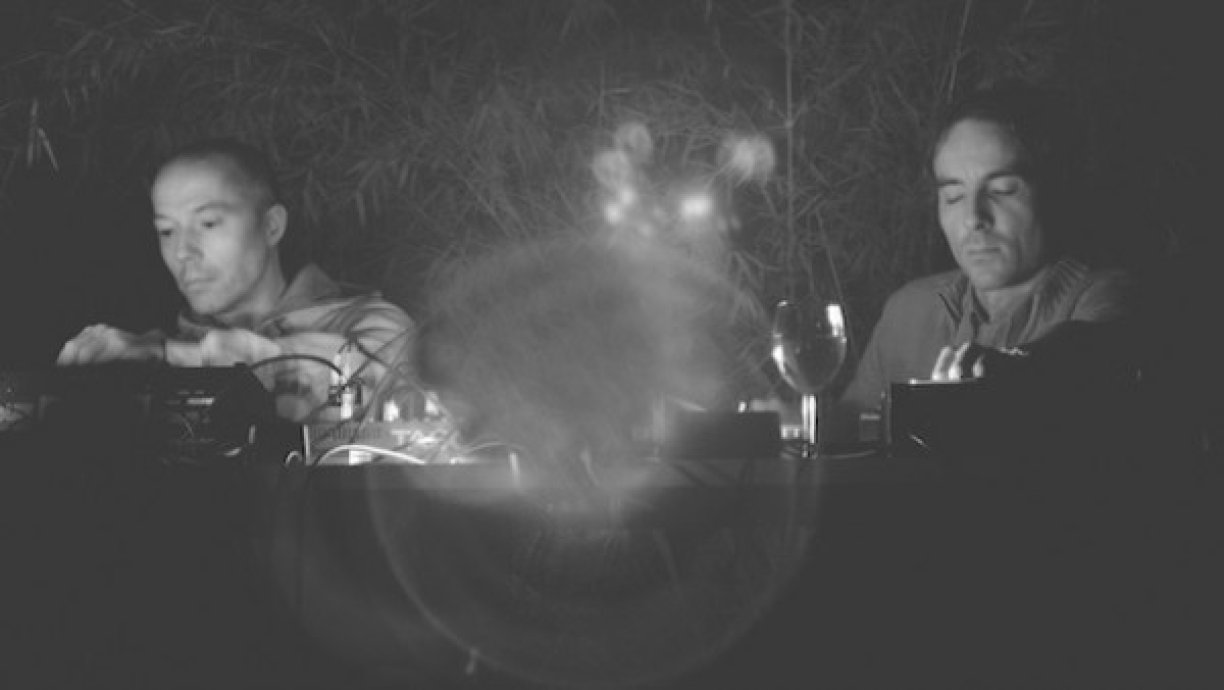In Camera, the surreal and psychedelic electronic music duo project of Christoph Heemann (of seminal experimental band H.N.A.S.) and Timo van Luijk produce an immersive cinematic and narrative sonic environment. Joined by Andrew Peckler and VioSac.
Christoph Heemann started the seminal experimental music project Hirsche Nicht Aufs Sofa (H.N.A.S.) and created its own label, Dom, to release it combination of surrealistic collage music. HNAS continued to release records until the groups demise in 1993, such as the album “Melchior”, co-produced by Steven Stapleton of Nurse With Wound, as well as several other LPs and CDs on Dom and other labels worldwide. In 1989, Heemann began a long-standing relationship with American musician/composer Jim O'Rourke, and together with Edward Ka-spel and Andreas Martin recorded three albums as the group Mimir. His first solo album was released the following year, and the same year he completed a long standing collaboration with the Japanese noise artist Masami Akita (aka Merzbow). A period of intense work began in 1998 with the formation of Mirror, a project with English sound artist Andrew Chalk, which focused on graphics as well as music, drawing on the beautiful artworks of both Chalk and Heemann. By 2005, Mirror had released over 20 albums that included musical contributions from Andreas Martin and Jim O'Rourke and appeared in concerts in Europe, America and Japan. Currently Heemann composes, performs, and produces and records albums by sound artists/composers such as Limpe Fuchs, Keiji Haino, Charlemagne Palestine, and many others. His ongoing musical collaborations include work with Jim O'Rourke, William Basinski, Lee Ranaldo, and with Timo van Luyck on the In Camera project.
 Timo van Luijk (Finland, 1967) is an autodidact composing improviser living in Belgium. He was a founding member of the experimental multimedia collective Noise-Maker's Fifes (1989-2006) and started his solo project Af Ursin in 1995. Van Luijk mainly works with acoustic (wind and string) instruments, various (sound) objects, keyboards and magnetic tape. With this setting he creates structured free form arrangements in which the intuitive and emotive aspect form the core of his musical approach. In his collaborations - including work with Christoph Heemann (In Camera), Raymond Dijkstra (Asra), Andrew Chalk (Elodie), Kris Vanderstraeten - he follows the same aesthetic of poetic sensibility. Since 2001 he has been releasing his work on vinyl, on his label La Scie Dorée.
Timo van Luijk (Finland, 1967) is an autodidact composing improviser living in Belgium. He was a founding member of the experimental multimedia collective Noise-Maker's Fifes (1989-2006) and started his solo project Af Ursin in 1995. Van Luijk mainly works with acoustic (wind and string) instruments, various (sound) objects, keyboards and magnetic tape. With this setting he creates structured free form arrangements in which the intuitive and emotive aspect form the core of his musical approach. In his collaborations - including work with Christoph Heemann (In Camera), Raymond Dijkstra (Asra), Andrew Chalk (Elodie), Kris Vanderstraeten - he follows the same aesthetic of poetic sensibility. Since 2001 he has been releasing his work on vinyl, on his label La Scie Dorée.
 Andrew Pekler's approach to music-making and sound has evolved considerably over the years but has always remained in essence an experiment with found materials, be they samples, instruments or genre conventions. His continual aim is to produce material that is equally as evocative and sensuously resonant as it is challenging. He has composed an entire album by starting from short text descriptions of what the tracks should sound like, inspired by the blurbs found on library records and he has electronically investigated the emotional sweep and grain of so-called easy listening music, spurring the BBC to write, “The results are rich, strange and occasionally oppressive; chamber music from a chamber that couldn't exist. Lovely.” http://andrewpekler.blogspot.com/
Andrew Pekler's approach to music-making and sound has evolved considerably over the years but has always remained in essence an experiment with found materials, be they samples, instruments or genre conventions. His continual aim is to produce material that is equally as evocative and sensuously resonant as it is challenging. He has composed an entire album by starting from short text descriptions of what the tracks should sound like, inspired by the blurbs found on library records and he has electronically investigated the emotional sweep and grain of so-called easy listening music, spurring the BBC to write, “The results are rich, strange and occasionally oppressive; chamber music from a chamber that couldn't exist. Lovely.” http://andrewpekler.blogspot.com/
Violence and the Sacred (VioSac) has been recording and performing electronic/experimental music since 1985. Many of their recordings were released on different cassette labels in the late 1980s. A vinyl record, Suture Self, was released in 1989 on the Freedom in a Vacuum label. Since 2008 VioSac has self-released three studio CDs: analogue synthesizer compositions, recorded on magnetic tape. The first two (Rusty Pile and You are planning to enjoy the apocalypse) are well described by Massimo Ricci as displaying a “constant rupture of any scheme that might remotely be associated with consonance and mental respite.” In June 2011 VioSac released the first 5 of a set of 13 CDRs of live and studio recordings from 1986 – 1993.


